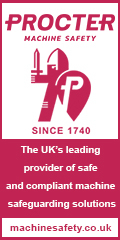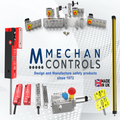
Posted to News on 12th Oct 2018, 11:37
White paper: the benefits of a Totex approach to project costing
A new guide from WEG shows how using a Totex (total expenditure) model when making investment decisions can help to reduce costs over the lifecycle of an asset, which offers significant long-term advantages compared with the conventional approach of purchasing from a capex (capital expenditure) budget and then paying the running costs out of an opex (operating expenditure) budget. While the WEG white paper focuses on the water industry, the Totex model will, at some point, surely become the preferred model when machinery and automation are being specified and purchased.

WEG's new guide Totex for the European water industry is available to download at www.wegwater.com. The comprehensive guide covers the rising trend of adopting a Totex model to overcome the challenges of the heavily regulated water industry, its benefits, and how specifically using it can help to reduce costs over the lifetime of the asset, while at the same time delivering better value and lower bills for end users. The guide also includes actual case studies.
Innovation
One of the important drivers of this approach which the guide addresses is the focus on technological innovation for better energy efficiency and through-life maintenance optimisation. Water utility companies can invest in innovative systems using the latest technology and be confident that they will extend asset life, improve efficiency and cut wastage in terms of leakage and energy consumption.
By using smart technology such as the Industrial Internet of Things (IIoT) and big data analytics, companies can have real-time data on all assets and processes to make sure that they are operating as efficiently as possible. It also enables staff to respond quickly to all unexpected events. Also, energy reduction can be accomplished through utilising innovations like green technology and equipment.
Using IIoT to connect sensors and other devices to collect real-time data to provide transparency across installed devices also enables predictive maintenance, where IIoT and big data analytics are used to monitor the actual condition of the asset 24/7 to determine when servicing is needed. In this way, the relevant staff are forewarned of impending failures and can then take action before the weakened parts lead to a breakdown.
How to implement Totex
After making it clear that technology is beneficial but not complicated, the guide moves on to complete the picture by demonstrating what enables a successful implementation of the Totex model. The guide argues that the most important enabler is having a reliable and established equipment manufacturer as a partner at the design stage where their R & D capability and innovative approaches can help improve operational efficiency throughout the asset's lifecycle. Manufacturers of key equipment such as pumps and motors are required to act as partners, rather than just product suppliers. Their roles have expanded to include recommendations during the design stage that can help utilities avoid system failures due to inadequate design.
This seismic shift, the paper concludes, is a good progression because it enables all parties to consider wider issues than what they are traditionally used to and to take into account these issues when they are proposing designs and equipment. As such, this is fostering a new era of collaboration across European water markets as utility providers, their main contractors and equipment makers establish closer integration through earlier engagement and consultation.
WEG's new guide is available as a free download from www.wegwater.com.
Want the latest machine building news straight to your inbox? Become a MachineBuilding member for free today >>

















